




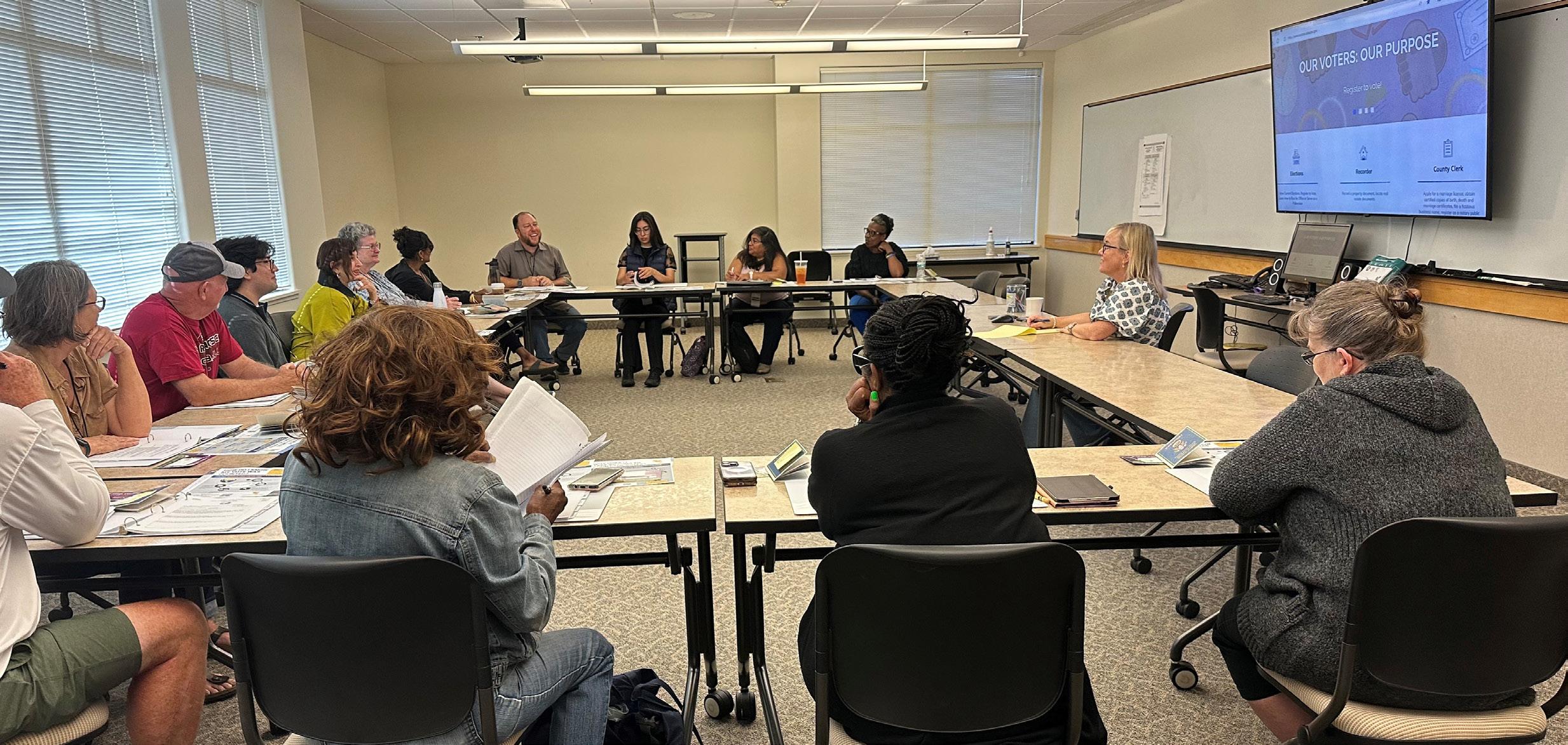
By DIEGO RUIZ-SAGRERO
MARTINEZ, Calif. – Americans’ faith in the integrity of elections has plummeted since 2020, with a recent poll from Gallup showing that only 57 percent of voters feel confident in the electoral system heading into the Nov. 5 presidential election.
Perhaps unsurprisingly, the poll found a major partisan split, with 84 percent of Democrats saying they trusted elections compared with only 28 percent of Republicans who said the same. Gallup
found that Republicans’ dwindling trust comes after former President Donald Trump’s recklessly disputed loss in the 2020 election that culminated in the Jan. 6 insurrection at the U.S. Capitol.
On a more local level, growing skepticism about election integrity—specifically the need for greater transparency in counting votes— has also increased, said Kristen Connelly, clerk-recorder and registrar of voters for Contra Costa County. As a result, in the 2022 midterms,
the county’s elections department started its own Certified Election Observer (CEO) program to educate the public and give citizens a “behind the scenes” look at the election process, assuring voters that every ballot cast has been accurately and fairly counted.
“Our whole trust and elections campaign is meant to encourage people to participate in things like the Certified Election Observer program, and to have people come to our office and observe our processes,” Connelly said
in a recent interview with The Inquirer Now, according to Connelly, local people’s confidence in the system appears to be on the rise after the launch of the program and multiple ad campaigns detailing the functioning of election systems.
“What we’re finding from our surveys [about] trust in elections is that when people watch our ad describing what our elections processes are, their trust in what we do goes up,” Connelly said.
She emphasized the need for programs that increase public trust in elections after so much contention, whether well founded or not, following the 2020 election.
“It’s really hard when there are very, very large megaphones that are casting doubt on what my profession is doing,” Connelly said, referring to widespread misinformation about voter fraud. “I try to do all that we can to just invite people in, give them the information, and hopefully, they’ll be open to it.”
The CEO program, held at the Contra Costa County Elections building in Martinez, takes voters through the registration process and includes poll worker training classes, machine accuracy testing, facility tours, and ballot box collection procedures. People enrolled in the program also learn about vote-by-mail scanning, signature checks, ballot tabulation, proviSee Transparency, page 6
By TORI
Diablo Valley College graduate and author Daniel James Brown spoke on Friday, Oct. 25 to a packed audience of alumni at the college’s 75th anniversary celebration on campus.
Brown is the author of many bestselling books, most notably The Boys in the Boat, which covers the journey of nine young men who overcame adversity and won the gold medal in the 1936 Berlin Olympics for the men’s eight rowing event. George Clooney adapted the book into a movie in December 2023.
The Inquirer had the privilege to spend 15 minutes with Brown discussing his journey to a successful writing career. The following interview has been edited for brevity and clarity. * * *
Tori Pearson: How about starting by telling us a little about yourself, where you’re from, what brought you to DVC, and your path to becoming a bestselling author?
Daniel James Brown: I grew up in the Bay Area. I was born in Berkeley, ended up living in Walnut Creek, and a little later my family moved to Orinda. In 1969, I dropped out of high school. I was having extreme anxiety. And in those days, people really didn’t know much about anxiety, how
to treat it, or really what was going on.
So I dropped out and that left me in this quandary: how am I going to move forward with my life? It was actually my mother who said, “You can go to DVC,” and so she showed me how to register and I came out here one day in 1970, signed up for classes, and just loved it right from the beginning.
My anxiety about school melted away completely. I made lots of friends and had great instructors— one English instructor in particular who sort of took me under his wing. I was a good student in English and so he nurtured that, and by the time I left here I knew what I wanted to do.
Ideally I wanted to be an English instructor, and in fact, that’s what I became for a number of years, but mostly I just wanted to live in that world of books and ideas that English majors do. That led to a number of jobs and situations, and eventually turned me into a writer, so I’m now in that sort of third phase of my life writing these books. Very much to my surprise, it’s actually worked out pretty well, but that all started at DVC.
TP: In your award-winning book The Boys in the Boat, you talk about the life of Joe Rantz, his childhood, and how his father left him when he was 14 years old. If there was a book written about your

childhood, what would that look like?
DJB: Well, I certainly never encountered the kind of obstacles that Joe Rantz did. I mean, he encountered real deprivation. He was basically abandoned by his parents when he was 14 and had to make his way in the world. So he faced real, true adversity. And I’ve always been interested in people, how they overcome things like that. My life, frankly, it’s been basically pretty privileged. I did have this one big problem as an adolescent, which was I just had crushing anxiety, and that
caused an enormous amount of turmoil in my life and left me really sort of full of self-loathing and in a very bad place. So I think if somebody was going to write about my life, they’d probably have to deal with that, talk about how I got past that, and as I say, I think DVC was a big part of that. But then beyond that, I’ve had this passion for books, for writing, for reading, for the world of ideas ever since. I don’t think my life’s particularly interesting, but I think one thing that might be interSee Author, page 4
By ELIZABETH FLINN
In the age of social media and AI-generated content, it can be difficult to know what’s true in politics—especially during a polarized election season like the current one.
Now, local democracy advocates are making efforts to change that by empowering voters through education and outreach.
“The public knows very little about what we [election officials] do,” said Tommy Gong, Contra Costa County’s deputy clerk-recorder. “We need to do a better job educating [voters],” he added, because disinformation can “metastasize” when left unchecked.
Gong, together with League of Women Voters (LWV) representatives Anna Honda, Valerie Ventre-Hutton, Martha Van Orshoven and Paul Derk-

sen, held two discussions on Sept. 25 and 26 at Diablo Valley College where they explained ways to spot false information about elections.
The speakers started the talk by clarifying the difference between misinformation and disinformation. Misinformation, which is factually incorrect news that is spread by mistake, and disinformation, which is spread deliberately with the intent to harm or mislead, have become more widespread in the digital age, especially relating to politics, they said.
“Fake news has been around forever, it will be around forever, it’s universal,” Nolan Higdon, a UC Santa Cruz lecturer on media studies and adjunct journalism professor at DVC, said in a separate interview.
Higdon, the author of The Anatomy of Fake News, teaches critical media literacy and said voters should learn “how to think” so they can identify disinformation when they see it.
In today’s hyper-partisan political climate, a lot of disinformation aims to undermine public trust in the electoral process and election security, said Gong, making it all the more critical for voters to know the facts.
For instance, claims of widespread voter fraud or “rigged” elections have proliferated since 2020, when
then-president Donald Trump refused to accept his electoral loss to Joe Biden.
In reality, voter fraud is extremely rare and elections have many safeguards to prevent interference, said Gong, citing as an example Contra Costa County’s election security page, www.secure-election.org.
LWV speakers at the event said election disinformation is bolstered by unregulated social media—the preferred news source for over 40 percent of American young adults in 2024, according to Pew Research Center—as well as by mass media consolidation.
When a small handful of companies control the majority of news outlets, said the speakers, they can repeat the same biased or false claims about political candidates to make them sound more believable.
One example is Sinclair Broadcast Group, the second-largest owner of U.S. television stations, which faced backlash in 2018 after using its immense reach to recite the same pro-Trump script on channels nationwide, provoking a moral panic over alleged “fake news.”
To determine what news sources are reliable, LWV stressed the need to distinguish facts and opinions from “propaganda” that is designed to trigger people’s emotions and “shut down” critical thinking.
If a headline makes you bizarrely angry, that could be a red flag for misleading information and a good opportunity to cross-check your facts on the issue, according to one of the speakers.
Higdon said it is important for informed citizens to “slow down” and spend time gaining a deeper understanding of topics, rather than succumbing to the pressure on social media to “know everything.” He added, “Resist the pressure to do more.” When deciding where to get your news, LWV said the most reliable outlets verify multiple sources, have no “obvious bias,” and provide context and balance in their reporting. Websites such as AllSides.com can help identify bias and crosscheck across the political spectrum.
Local news is an especially valuable source of information, according to LWV. But about 200 of the 3,243 counties in the U.S. have no local newspaper, creating “news deserts” that are more vulnerable to mis- and disinformation.
In many cases, national conglomerates like Sinclair are able to dictate the content of local television stations, making them “local in name only,” said Higdon. He added, “When communities have local journalism that’s doing their job well, that’s some of the most important news in democracy.”
By GAGE WALKER
Pleasant Hill residents will vote on Nov. 5 on a measure that would raise money to build a new park, renovate the city’s community pool and make improvements to existing parks.
For residents young and old, Measure S could have a visible impact on their quality of life.
“I like going to the park every time I go to the library,” said 6-year-old Kirby Aellman, who was playing at Pleasant Oaks Park with his dad on a recent afternoon. Aellman added he would love it if the new park had more swings and a giant zipline.
If Measure S passes, the district will sell bonds to raise up to $77 million that it can use on certain projects beyond what is available in the district budget.
The bonds would be paid through property taxes based on the assessed value of property in the district, with the highest rates estimated at $19 per $100,000 of assessed value, according to the Pleasant Hill Recreation & Park District.
Those who oppose the measure argue that the district already has a con-
The Inquirer
siderable amount of debt at $27 million, and the additional $77 million could result in a credit downgrade.

Michelle Lacy, general manager of the Recreation & Park District, told The Inquirer that land next to the new Pleasant Hill Library, which opened July 30, 2022, has been sitting unused and waiting for funding for a new five-acre park.
“The new park is a high priori-
Diablo Valley College, ST-103 321 Gold Club Road, Pleasant Hill, CA 94523
The Inquirer is run by a dedicated team of student reporters, writers and editors. If you want experience telling stories that matter to the campus and community, you can join the paper by enrolling in DVC News Production courses, JRNAL 125 or 126. For more information, contact the advisor at mlevitin@dvc.edu. Follow us on Instagram: @dvcinquirer
ty,” Lacy said, and it’s important “to finish that complex. We would like it to not be a blank piece of land next to the beautiful new library.”
If passed, the measure would also help fund the renovation and upkeep of the Pleasant Hill community pool, located on 147 Gregory Lane, which is over 70 years old and was the first facility built after the park district was formed.
Renovations to the pool could make it more energy-efficient and usable for the community, Lacy said. Additionally, Lacy said the funding from Measure S would be used for “[building] accessible restrooms in all our parks.”
“We have parks, like Brookwood Park and Paso Nogal, that don’t have restrooms,” she said. “They’re using porta-potties.”
Fabian Garcia, a former Concord local who likes to visit the parks in Pleasant Hill with his cat, Archie, said, “A lot of people enjoy coming to the parks here. I was here for an hour and lost track of time.”
“[People come] to have picnics and they even have a gar-
Staff Writers
den where you can rent a plot and plant anything you like,” he added.
For many residents like Garcia, this measure could make the parks more usable, improving accessibility and helping keep the parks a relaxing place to spend time.
Lacy said that with the passage of the measure, the district hopes to complete one new project in each park while adding a new five-acre park near the library.
“If this measure were to pass, we’d be able to finish all of the outstanding major projects,” she said.
The measure seeks funding for projects similar to local Measure A in 2020, which received a 55 percent majority vote but failed to reach the two-thirds required to pass.
Measure S, like Measure A, would require a two-thirds Yes vote to pass, or 66.6 percent.
Measure S will be on the Nov. 5 ballot for Pleasant Hill residents. Visit https://www.contracostavote. gov/ to find local polling places and ballot drop-off locations.
Colin Dalvand, Olivia Delucchi, Elizabeth Flinn, Jaden Montano, Jasmine Naemi, Tori Pearson, Ella Potts, Carla Rivera, Diego Ruiz-Sagrero, Gage Walker, Nate Wendling
Editor-in-Chief Alyssa DuFresne
Layout Designers Alyssa DuFresne and Ella Potts
Social Media Team Olivia Delucchi, Ella Potts, Carla Rivera, Jasmine Naemi
Advisor Michael Levitin
To send a Letter to the Editor or to get in touch with other queries, contact: INQUIRER@DVC.EDU | WWW.DVCINQUIRER.COM
By NATE WENDLING
Pitching tents and reciting chants for national liberation, the students of San Jose State University (SJSU) launched a peaceful pro-Palestinian protest in May 2024. Not many professors joined the students in solidarity with their cause, but one teacher who did, Dr. Sang Hea Kil, got suspended as a result.
On Oct. 2, Kil spoke to a packed audience of 200 students and faculty at a Diablo Valley College social justice speaker event. She discussed her experience at the SJSU encampment, her suspension, and the broader impacts of student protests for Gaza on college campuses.
“I was a political activist since I was 16,” Kil told the DVC audience. “I didn’t experience the level of silencing that I think you all are experiencing in this different political moment.”
As protests against the war in Gaza made their way to colleges nationwide in the spring, Kil took pride in seeing the students of her campus get involved and speak out against the school, and advocate for the freedom of Palestine.
“You associate student political activism with Berkeley or Stanford or SF State, but really never with San Jose State University,” said Kil, “so the fact that this encampment happened on my campus just felt amazing.”
Kil was serving as the faculty advisor for Students for Justice in Palestine (SJP), a student advocacy organization that calls upon SJSU to divest from companies that support Israel amid the occupation and destruction of Palestine.
As students planned the May protest, members of SJP asked Kil for advice and requested that she communicate their demands to the media, Kil said.
“Because the threat of doxxing is very real, they asked me to be their representative for the media,” said Kil, adding that the protesters used code words and face coverings to protect themselves against potential Islamophobic backlash on campus.
“I just kept to the talking points that they wanted me to keep to.”
In a letter San Jose State subsequently sent to Kil, which she posted to her Instagram page, the administration claimed she was suspended in pursuant of Article 17 of the Collective Bargaining Agreement between the California State University and California Faculty Association.
The letter claimed that Kil had encouraged her students to violate university policies in support of the protests and in contradiction to her responsibilities as a faculty member and student advisor on campus.
Kil said she was suspended merely for supporting her students. In an Instagram post where she attached the letter, Kil wrote, “SJSU suspended me from my job for my Palestine work. The fight for academic freedom continues.”
Due to her suspension, Kil said, she was only able to represent herself at DVC, and could not speak on behalf of San Jose State University. She accused SJSU of selectively enforcing its Time, Place and Manner
policy, which according to the California State University website, states:
“The CSU has the authority to regulate the use of all university property and when, where and how it is used. The CSU has therefore established standards that set forth the ‘time, place and manner’ in which all activities may be conducted on university property.”
Kil said that at university sporting events, students are encouraged to make noise and shout in support of their school teams, exhibiting their freedom of expression. When it involves politics, though, students don’t necessarily get that same freedom, she said.
“Freedom of expression is not an absolute right” based on the school’s time, place and manner policy, Kil said.
Dr. Albert Ponce, professor of political science at DVC and co-director of the school’s Social Justice program, which hosted the event, seemed to agree.
“Academic freedom is a threat to the powerful because it opens the door for critique,” Ponce said in his introduction to Kil’s talk.
For many students in attendance, the conversation was eye-opening.
“Speaking about it and giving the experience [Kil] had was important to help tell people about what’s happening,” said Diana Ramos, a student who attended the event. “This helps people see the bigger picture.”
A number of students stayed after to talk to Kil and thanked her for speaking out. “This talk keeps people informed,” said a student who preferred to remain
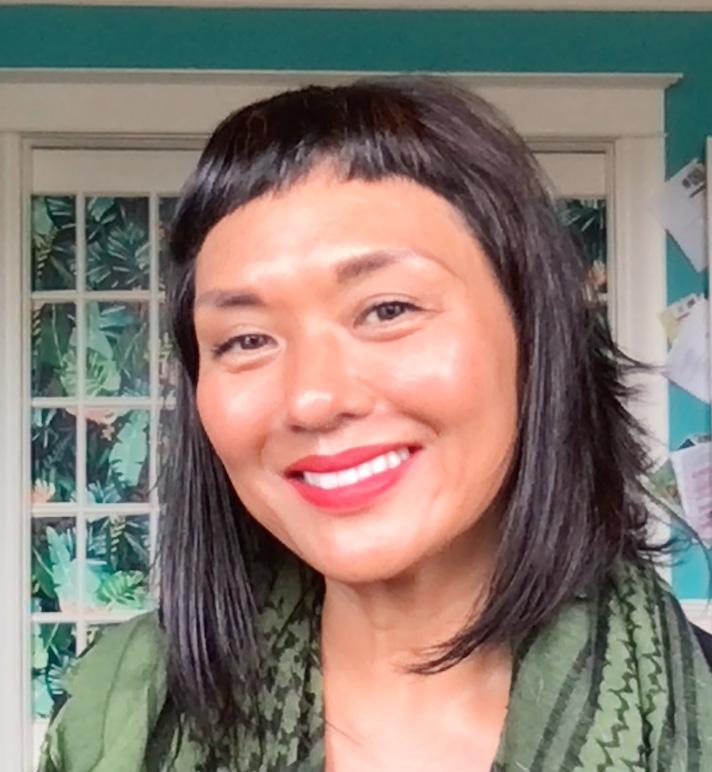
anonymous. “It displays internal divisions that are growing in the systems.”
Kil compared her experience at the SJSU protest with other pro-Palestine encampments at CSUs.
When students occupied a building at Cal Poly Humboldt, for example, the administration initiated a campus lock-down and a mass arrest of protestors, according to Kil. She added that students at CSU Channel Islands filed a $1 million dollar lawsuit against the university after the college swept their pro-Palestine encampment.
Kil said that Sacramento State and San Francisco State managed to conduct peaceful negotiations around divestment issues after their encampments.
“I think these encampments were so politically impactful,” said Kil. “Just doing the encampments alone I think was an incredibly moving [and] historic experience.” She added, “Students need to be aware that it is an uphill battle.”
By CARLA RIVERA
On a bright day in early October, Monique Cortes, a peer advisor and culinary student at Diablo Valley College, brought her 5-year old daughter, Mia, to the Commons where she got to know the campus alongside dozens of other children of DVC students and faculty at Bring Your Kids to College Day.
Cortes, a single mom, said she appreciated the ability to show her daughter the school where she studies.
“She’s getting to know the staff and the people that I work with, and the other kids that come to the events,” she said at the Oct. 9 event.
Cortes pointed out the challenges of balancing academics and motherhood. “You have to be a master juggler,” she said. In addition to putting in long hours of study, she said “you’re responsible for somebody, their wellbeing, and taking care of every aspect of their life.”
Another mother, Nayela Hernandez, a health science major at DVC, reflected on her daughter Naja’s experience at Bring Your Kids to College Day.
“This is good, introducing her to the college environment, to the campus, so I know she could feel safe coming back here in the future,” Hernandez said, imagining out loud about her
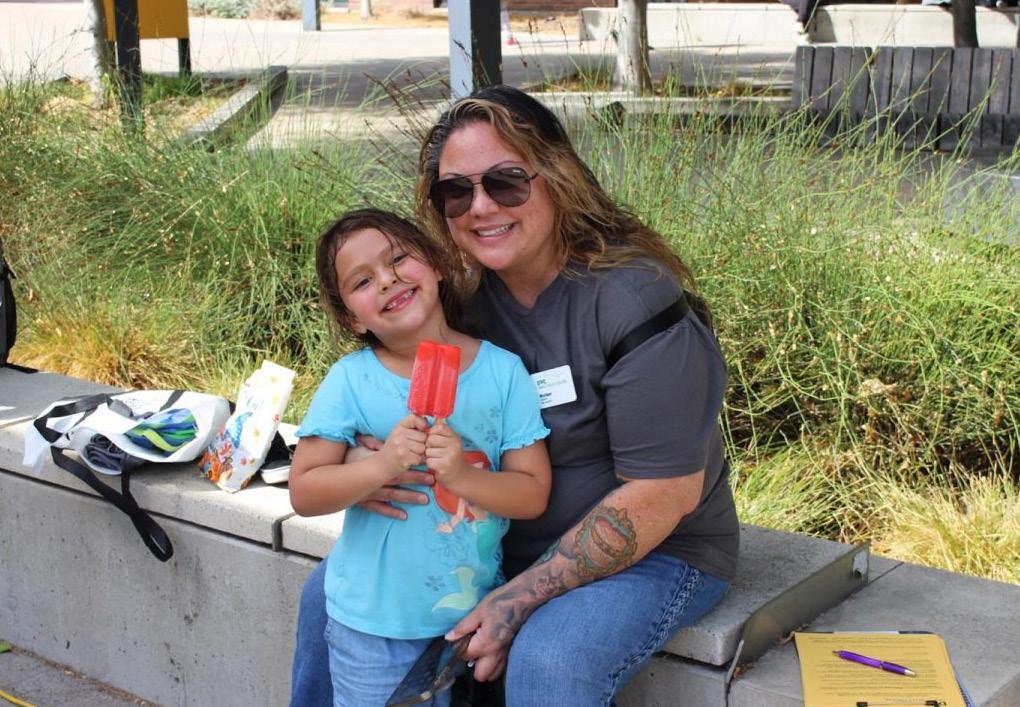
daughter’s own college career beginning “thirteen more years from now.” Hernandez added that she enjoyed seeing Naja feel included and supported by the school. “DVC is very hands-on with student parents, very informative, very take-action,” she said.
The all-day event, led by DVC’s Cooperative Agencies Resources for Education (CARE) and California Work
Opportunity and Responsibility to Kids (CalWORKS) programs, provided an opportunity to connect children and parents to the services and programs available to them on campus.
Among the services and programs offered were spaces to learn at the DVC Library, which has children’s books and activities for kids whose parents are studying, and an invita-
tion to sign up for library cards at the Contra Costa County Public Library.
During the afternoon, many kids tackled a life-sized version of Connect Four at the family festival in the Commons area, where they also enjoyed the thrill of bouncy houses and ice cream.
“It was awesome to see bright smiling faces and hear little giggles across campus all day,” said Rachel Luna, program manager of CARE, CalWORKS and Foster Youth Services, and the event’s coordinator.
According to Luna, the event was especially geared toward serving families disproportionately impacted by basic needs, insecurities and barriers to academic success.
She said she hopes the day inspired some little ones to go to college—and to hopefully one day become future DVC students.
“We hope this showcases for student parents and all members of the DVC community that higher education can transform lives and communities multiple generations at a time,” Luna said.
Standing beside her daughter, Mia, Cortes added that despite the time it’s taking her to get her degree, all of her work is rewarding in the end. “The best job I have is being a mom,” she said.
By OLIVIA DELUCCHI
The opening of the new Inclusivity and Wellness Center at Diablo Valley College represents a significant step forward in supporting the diverse needs of the student body, according to school administration.
The center, located in a newly remodeled space on the first floor of the Student Union Building, Room 111, had its grand opening on Oct. 16, and is already welcoming students in need.
“We aspire to be a beacon of hope and empowerment for our students to thrive academically, personally and emotionally,” said Eric Handy, DVC’s interim dean of student equity and engagement.
The Inclusivity and Wellness Center seeks to provide a comprehensive array of resources and services. While six other student centers exist on campus, this center will be the premier resource hub for direct-to-student health and wellness services, according to Handy.
“We’re going to be providing health services directly to students, free of cost, which is a big part of our basic needs,” Handy said.
The Inclusivity and Wellness Center publicizes upcoming events and opportunities for students on their Instagram, @dvc.iwc.
To make it easier for students to
Author, from front esting about it is [that] people generally these days often say that an English degree is a degree that’s not worth getting.
My experience was completely opposite to that. I had three wonderfully rewarding careers with my degree in English. I was a college English teacher for 12 years and [had] a wonderful time, extremely fulfilling.
Then I was a technical editor, technical writer and instructional designer at Microsoft, and although I wasn’t passionate about computers, I actually found that work of teaching users how to use the software interesting.
I found Microsoft really a fun place to work because it’s full of really smart people. And then, that turned into this job as a book author. That’s where I had wanted to wind up all along. It took me until I was 50 to get there.
TP: When discussing the life lessons learned by the boys in your book, you write, “Each in his own way, they had all learned that nothing could be taken for granted in life, that for all their strength and good looks and youth, forces were at work in the world that were greater than they.” What were some of the life lessons that you learned during your time here, or during your career, that you kept close to your heart and took forward with you?
DJB: Pretty much that same lesson: there are forces in the world that are stronger than any one individual, and there are times when people have to come together with other people in order to confront them. So I’m a big believer in collective action, in forming teams, in forming groups and making relationships. That whole generation of Americans that lived through the Depression—and
access the support they need without financial barriers, Handy said the center will offer free medical and mental health services including flu shots, various illness testing kits, free snacks and wellness counseling.
“Our goal with this Inclusivity and Wellness Center is to be a focal point where students can come and get recharged, get re-energized, [and] be able to put some healthy, nutritious food in their system,” he added.
The administration’s aim with the center is to enable students to focus on their academic pursuits, engage in personal growth, and develop a stronger sense of community and belonging on campus.
Handy said the idea is for students to “be able to get the mental health support that they need, and/ or health services that they need, but in addition, also be a place for counseling and community building.”
The center will also provide specialized services for marginalized student populations, such as free legal assistance for undocumented students and counseling for LGBTQ+ individuals.
“We have a partnership with SparkPoint, and we will be providing free literacy service,” Handy said.
SparkPoint is a company that collaborates with organizations and
these boys were a part of that, beginning with the stock market crash in 1929 and the Great Depression—they faced this enormous thing in their lives, and the only way they could get through it was by putting their differences aside, coming together, pulling together, and getting things done together.
I’m a huge admirer of that generation. They certainly had their faults,

but they really exemplified something that is potentially great in all of us: the ability to transcend ourselves, become part of something bigger than ourselves, and work with other people to reach goals that we might not otherwise be able to reach.
TP: How do you feel writing this book over six years, as well as your other books, ultimately changed you?
DJB: All of my books in one way or another have to do with people overcoming adversity. All of them have to do with ordinary people, all of them or-
families to address their basic needs and help students boost their income, improve their credit, enhance their savings and lower their debt.
Handy said different communities of students were asked to provide their input and personal touch on the space to ensure that it’s inviting to everyone.
“Students were really instrumental,” Handy said, “both our ASDVC Student Leadership body, but also students that are affiliated with the several different communities we hope to serve.”
In 2014, ASDVC communicat-
ed the needs of the student body for more inclusive spaces on campus, and in 2021 the college began renovating Room 111 for the center. For example, the mural in the entrance of the center was hand-painted by DVC students. Reflecting on their aesthetic contribution to the space, Handy added, “it breaks down some of the systemic barriers that students face going in other spaces on campus where they don’t really feel like it’s a space for them.” He added, “This is a space for the students, by the students.”
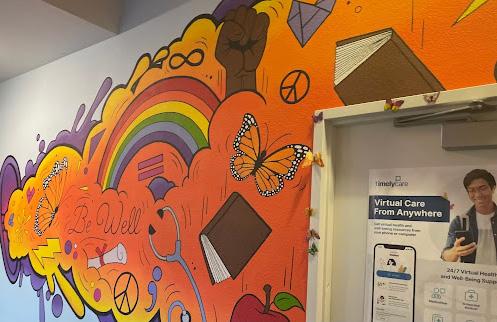
dinary Americans, in fact, who confront really, really challenging circumstances.
So, as I say, I think my life’s been pretty privileged. But it has given me an enormous appreciation for those people who are able to come through those times. It’s been inspirational for me. I didn’t know any of these stories before I sat down, researched them, and wrote them. And when you write a book, it’s like reading a book but really, really deeply. I know a lot of readers have been inspired particularly by The Boys in the Boat. Believe me, the experience of writing the book has inspired me very, very deeply. It’s changed my outlook on the world. I no longer see things that I thought were real challenges as very significant.
TP: In the epilogue you mentioned how you actually went to where the boys rowed in Berlin, and you wrote that it was kind of an awestruck moment for you. Were there any smaller moments that you particularly were fond of while you were uncovering the different stories of their journey?
DJB: Yeah, there are probably lots of them. What I write is called narrative nonfiction, and often when you start to write a project like this, what sounds like a great idea at first, the more you dig into it, oftentimes it just kind of peters out. It doesn’t turn out to be as good a story as you thought, or there isn’t enough information about it to really develop into a book.
With The Boys in the Boat especially, the deeper I dug into that story, the more doors opened up. There were all these little moments of complete surprise.
For instance, when I was writing the book people kept talking about George Pocock, the boat builder. Pocock, Pocock, Pocock. And I kept thinking, “So
what? I don’t care who built the boat.”
But then, finally, I got curious, so I looked into this guy named George Pocock and turned out he’s this amazing figure. This ultimate craftsman, sort of a Yoda-like figure to these boys, just full of wisdom, and his life was really interesting. So this whole new thing opened up the moment I started looking into Pocock’s life.
TP: For current DVC students who are beginning their journey toward an English or history degree, what word of advice would you give them for their future endeavors?
DJB: I would say, first of all, take advantage of every moment of your experience here. The two years I spent at DVC were among the happiest years of my life because I had great instructors. And I would also say, find classes and find instructors who light you up.
I took freshman English from a guy here named William Spark, and he literally changed my life. He took me under his wing, he taught me how to be an English major, taught me how to think in a lot of ways. It changed the whole direction of my life.
So whatever field you may be interested in, whether it’s drone technology or whatever it is, find somebody who’s passionate about it and spend time with them. Be receptive to what they can teach you. Because most people teaching at community colleges, I know this because I did it for a while, they do it mostly because they love their students. They want to energize their students, they want to make their students’ lives better, they want to light their students up. So find someone who lights you up in an area you are excited about and then things will take care of themselves.
By ELLA POTTS
John Jarnigan, a third year student at Diablo Valley College, discovered the Horticulture Club when he was still trying to find his direction. Now he hopes to get his bachelor’s degree in horticulture and plant sciences.
“I’ve had a lot of time to explore my interests among various classes. Of them all, the horticulture unit has certainly felt the most like home,” Jarnigan said. “Our entire existence on this planet has been aided by the help of plants, whether medicinally or for nutrition.”
“Now, more than ever, we as a society should be utilizing the marvels which already exist and further expand our knowledge,” he added. The Horticulture Unit
DVC’s horticulture unit may be having something of a public reemergence on campus. The department has put on plant sales since the 1990s, but never have so many plants flown off the shelves as they did at a recent sale on Sept. 27 and 28.
The event marked the latest record-breaking sale of plants at the school. The most recent sales on Oct. 25 and 26 attracted attention from alumni who visited the campus in honor of DVC’s 75th anniversary.
According to Michelle Eyestone, who has been the lab coordinator of the horticulture program’s plant sales for the last seven years, “in the last year literally every plant sale we had was a record breaker.”
Eyestone explained, “We have the plant sale on the same weekends every year, so it’s really easy to do the drawback and look at year by year comparisons.”
“This is my first real attempt at a college degree, and plants are what got me into it,” said Ashley Garrow.
Beathalynn Black has been working in various aspects of horticulture for over 50 years, 14 of which she has taught at DVC as the unit lead for horticulture. Black, who holds a degree in ecological agriculture from New College of California, said a lack of horticulture education is weighing on our society.
“In terms of what I think is important in the world, this, I think, is one of the most important: if you stop feeding people, you have complete social chaos,” Black said. For this reason, “it’s extraordinarily important that people learn how to do this.”
Currently, low enrollments are threatening the program. “If we don’t have people signing up, this program will go away,” Black said.

While meandering through DVC’s plant sale last month, shoppers saw rows upon rows of plants to buy, from perennials and annuals to house plants. Meanwhile, students and professors stood by, eager to answer questions.
“I’ve been in this field 40 years, I have so many facts to share,” said TJ Cape, a horticulture instructor at DVC working at the plant sale.
“The plant sales, held multiple times a semester, draw on student teamwork,” he said, “from the preparation to the actual selling of the plants.”
He added, “Students all participate at the nursery here, which gives them some real world experience, cultivation experience, customer service experience, inventory, and management.”
Eyestone agreed and added that a lot of teamwork takes place beforehand.
“This is a hands-on program,” she said, where “you learn everything about horticulture across the classes, and everybody plays a role.”
“We handle all the plant production,” added Eyestone. “Everything you see at these plant sales was propagated [by] the students.”
The Student Experience
Eyestone said the diversity of par-
By BRANDON NELSON
ticipants also defines the program.
“We get the 20-year-olds who are taking this class in order to transfer, [and] those who want to go work in the field,” she said. “We get re-entry people who want to come back and retrain and do something else with their life. We also get retirees that are coming in as hobbyists.”
Ashley Garrow, a 36-year-old entrepreneur and student, told The Inquirer, “I started a plant business during the pandemic. I haven’t been able to find a job, but I figured, ‘I still have my business—I should go back to school and figure out how to run this properly.’”
Initially, Garrow said, “I started with the intention of completing the horticulture entrepreneurship certificate, but now that I’m in it, I’m more interested in pursuing an associates degree.”
“This is my first real attempt at a college degree, and plants are what got me into it,” Garrow added.
Another student, Linnea Lion, is taking Plant Materials and Uses, taught by Eyestone. Lion, 64, said she first started taking horticulture classes in 2012.
She has an associates degree in biology from Los Medanos College, and multiple certificates in horticulture from Merit College and DVC. “You just can’t ever stop learning,” said Lion.
Regardless of students’ backgrounds, Eyestone said, what brings them all together is a love of plants.
“I think that everybody has something in common, that everybody wants to learn how to grow food, which I think is really kind of an [outgrowth] of Covid, because we all learned how threatened our food supply really is.”
Eyestone said her passion is to help students regain the skill of growing food.
“You can really add to your food security through your ability to grow food,” she said, so “we try to have all kinds of options. A lot of times students come through the program and all they have is a balcony, so we often have stuff you can grow in a pot. We really try to honor options that are good for the entire community.”
Eyestone added, “Food is really the most important thing, and it’s a thing we all share. Regardless of gender or race, we all need to eat.”
Do you find that AI, such as Chat GPT, is helpful or harmful to the educational process, and why?
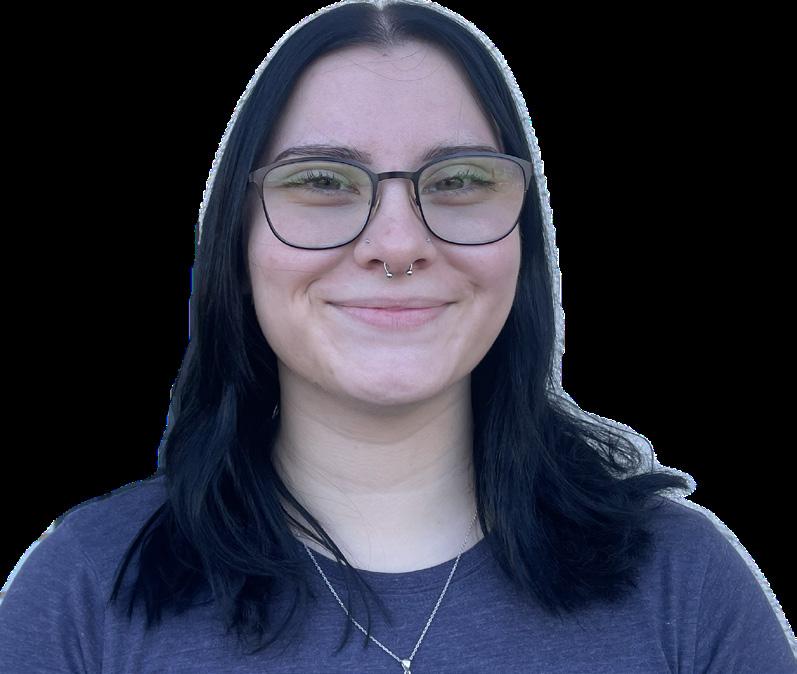
“It starts to cross a line when the ideas presented to you from the websites are no longer your ideas, because, in reality, they aren’t the AI’s either. It’s gathered from outside sources.”
Kylie Gandy, 21, English major

“It’s stopping us from learning about things and instead just copy and pasting what we’re reading. Also it’s really bad for the environment.”
Emily Hall, 21, Tech.
major

“While I do know people using it as a educational tool, most people I know put in a prompt and copy and paste what it spits out. It’s also bad for the environment and job market.”
Julian Villegas, 23 Drama major

By JADEN MONTANO
Timothy Mitchell, a 22-year-old business student at Diablo Valley College, is making some waves with his new clothing brand, GRIM. The name stands for “Getting Right Inna Money” and “Getting Right Inna Ministry,” which Mitchell said is a testament to his focus on both business and his Christian faith. Mitchell’s company, which produces shirts and hoodies, was highlighted at a recent Business Beyond the Classroom event held Oct. 16 on DVC’s Pleasant Hill campus. The biweekly event invites students like Mitchell to present their ideas for startups and seek guidance from professionals as they navigate entrepreneurship.
For Mitchell, the gathering provided an opportunity students rarely get: to meet and network with real-world business people. “I got a recommendation from a business owner at the event on where to invest in my blank hoodies for a better profit on my clothing brand,” Mitchell said.

Originally from Richmond, Mitchell moved to Antioch and graduated with honors from Deer Valley High School. After his parents separated during his junior year, in what he says was “one of the biggest hardships of my life,” Mitchell became motivated to start GRIM. He said the purpose behind his business is “to build generational wealth and pass the company down to [my future] children.”
For Mitchell, it’s all about persistence and belief in his vision, which is also connected with his faith.
As a youth minister at Covenant Church in Brentwood, Mitchell said he helps to feed 80 to 100 families every Friday. He said his “dedication to the community” is reflected in his brand’s mission, striving for both financial success and spiritual growth.
Mitchell said he believes “you reap what you sow,” and that his involvement within the community will eventually pay off by building connections to allow his company to prosper.
“I know my business will be successful if I continue to do anything possible to benefit and put my brand out there,” he said.
By TORI PEARSON
Put aside your cab fare, pick out your favorite pumps and prepare yourself for Diablo Valley College’s rendition of a classic Broadway musical.
Sweet Charity, which ran from Oct. 18 through Nov. 3, follows the life of Charity Hope Valentine, an eternal optimist who makes a living being paid to dance with men at ballroom events in 1960s New York City.
Charity dates a variety of men, each one different from the last, in the hopes of finding the soulmate she has been searching for. Despite every failed attempt, her optimism for the future stays intact.
The role of Charity Hope Valentine was played by Kaila Knudsen, a 19-year-old third-year student at DVC. Knudsen has extensive musical theater background and said she was thrilled when she found out she was given the lead role in the production.
She got her introduction to the DVC stage as a swing, who understudies for various roles, in DVC’s production of All Shook Up last fall.
“[Charity], to me, represents kind of this new age of feminism that we’re coming into,” Knudsen told The Inquirer. “She has so much confidence, and she’s not afraid to be ugly or to be goofy or silly.”
In preparing for the performance, Knudsen explained the hardest yet most rewarding part has been learn-
Letter to the Editor
Dear Editor,
I believe that using artificial intelligence (AI) technology (like ChatGPT) should be banned in all educational settings. Though many believe it can be a valuable assistant in certain fields, I don’t think that it should be included in our educational fields.
To begin with, AI can make students lazier. It causes students to not use any creativity or critical thinking, so when a test comes up, they don’t understand anything on the test and just end up failing. AI can be limiting in the encouragement students need to learn and remain engaged with material, ultimately affecting the skills they need to succeed in their future.
On top of that, AI lacks the main thing that is essential in teaching: human touch. Educators are so much more than just teachers and books of
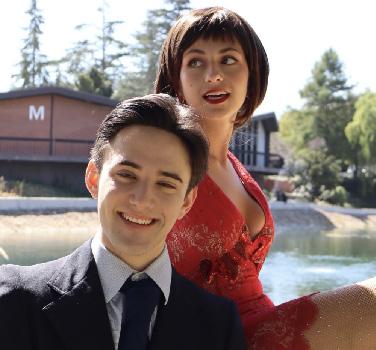
ing to sustain the high emotional energy of her character from the first moment on stage to the last.
“It’s a wonderful spectacle and a lot of it is so joyful, which means it takes a lot of energy,” Knudsen said.
One of the men that Charity meets is the geeky Oscar Lindquist, an awkward but loving accountant who longs for Charity’s affection. He was played by Alec Barnett, a 21-yearold third-year student at DVC.
“At least to me, [Sweet Charity] is one of those one in a million shows. This one is really special because it’s such an amazing group of people, and I really hope people get to see all of our hard work.”
Some may recognize Barnett from the many previous roles he’s had in DVC productions, including a fore-
knowledge. They also serve as our mentors, understanding their students in an emotional and social way that AI just can’t compete with.
The use of AI can also cause a lot of issues in regards to equity, as not all students have access to such technology.
Some argue that AI can be used as a “tool” – but in reality, who actually uses it as just a tool? The misuse of AI is too tempting! AI will never be able to replace teachers and I believe that education should stay a human-centered career.
Sincerely, Corey
Bennett


man in Witness for the Prosecution (Fall ‘22), an ensemble member in Freaky Friday (Spring ‘23), the leading man in All Shook Up (Fall ‘23), and Mooney in Hangmen (Spring ‘24).
Barnett said he has been a “music kid” for years, having studied music theory and produced his own music independently. However, his musical theater journey only began when he attended DVC.
“Moving into musical theater was a lot harder than I thought it would be,” said Barnett. “It’s so hard, but it’s also so rewarding. Putting in all that work, and then seeing it all go up, there’s just nothing like it.”
Barnett said he was able to ease the transition to musical theater by taking a variety of classes with the DVC Drama Department, which has grown as a passion project for Sweet Charity’s director, Lisa Drummond.
Drummond first came to DVC in 2009 at a time when the col lege’s drama department was small er, with only a few classes offered and no musicals in production.
Although the musical theater pro gram existed prior to Drummond’s in volvement, it was minimal compared to what the department offers today.
After building up her reputation by teaching drama classes “here and there,” Drummond convinced the school board to let her produce a school
musical alongside her colleagues Beth McBrien and Nicole Hess-Deistler.
After directing 25th Annual Putnam County Spelling Bee in 2013, Drummond was allowed to write a syllabus for an advanced musical theater class. That class grew into several, and in 2015 she was hired by the college as a full-time faculty member.
Today, students can earn an associates degree or certificate in musical theater and participate as a cast or crew member in musical productions such as Sweet Charity
“It’s nice to be doing a show that is really, truly a snapshot of a different time,” said Drummond. “These amazing young students are put-

Transparency, from front sional and reconciliation ballots, polling place supplies, and methods for tallying up one percent of the votes manually.
Twenty years ago, former California Gov. Arnold Schwarzenegger banned paperless voting after Diebold voting machines experienced multiple glitches, causing some polling places to turn voters away. Contra Costa County has always had paper trails regardless of the way voters cast their ballots, Connelly said.
Physical records and paper ballots seem to ease some fears about electronic voting machines and their potential hackability, she added.
“There is a comfort and a traceability about paper that people want to see,” Connelly said.
One participant in the CEO program, who preferred to remain anonymous, confirmed this sentiment.

“I’ve always liked voting on [a] paper ballot,” he said. “It feels more secure knowing there is a physical record of my vote.”
Reflecting on his experience in the program, the participant added, “It’s one thing to hear about secure elections, but seeing the process firsthand put my mind at ease.”
Connelly said this sense of security and trust in electoral transparency is exactly what the CEO program aims to instill in voters.
“Our representative democracy depends on the consent of the governed, and it’s an honor to be a part of the team of people, of elections officials, that are administering elections so that we can remove as many barriers as possible so that every eligible voter can cast their vote,” said Connelly.
“I believe in radical transparency.”
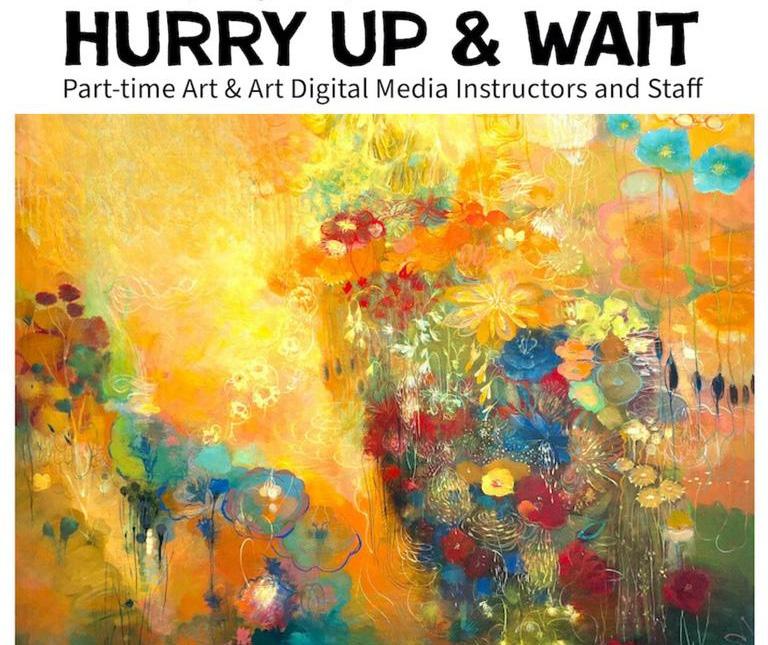
By COLIN DALVAND
What does it mean to be a part of our city’s 57-year baseball history that has come to an end? For me, the answer was bittersweet.
On Sept. 26, after more than half a century in the Bay Area, the Oakland Athletics played their 4,493rd and final game at the Oakland Coliseum. While the Oakland soccer club, the Roots, and a newly founded baseball team, the Ballers, will continue to entertain the city at the Coliseum, Oakland’s farewell to the Athletics leaves a void that will be difficult to fill.
As someone with aspirations of working in the sports media industry, I had an opportunity to join the A’s organization during their final season in Oakland. The welcoming atmosphere that greeted me from day one, with smiles and friendly greetings from the staff, was a stark contrast to the emptiness that will soon engulf Oakland’s sports scene.
During the season, I worked closely with the team’s legendary elephant mascot, Stomper, who encapsulated the energy of Oakland through his spirited interactions with players, fans and Coliseum personnel. I handled everything from handing Stomper peanuts to managing special visits with fans, while also assisting Kara, the Coliseum’s on-camera presenter, with on-screen promotions. No longer seeing the joy on the childrens’ faces after Stomper’s visits will be a gut punch to fans who follow the team after their tenure in Oakland.
My coworkers and I accomplished many tasks together, such as coordinating the game “steal a base” and choosing kids for the famous “dot race.”
I also helped hold the finish line for the “big head race” that three of Oakland’s finest (Rickey Henderson, Rollie Fingers and Dennis Eckersley) would run through.
In early September, I had the opportunity to speak with A’s broadcaster Chris Caray. His enthusiasm for the club during our conversation was a testament to the spirit of Oakland he represented. Even though this past year was only his first with the Athletics, he gave me valuable advice on how to progress in my career as a broadcaster. “Be yourself when you’re on air,” he said.
“Lots of people think this is a job anyone can easily do,” he continued, but “not everyone can do what we do.”
Discussing the A’s personnel, Caray added, “People don’t get enough credit for what they do. Everyone works so hard behind the scenes.” His words made me think about all the security guards and support staff who came in each day at dawn and didn’t leave until well after sundown. Caray highlighted how those employees were the true unsung heroes of the Oakland A’s.
According to Athletics personnel, the entirety of that staff will not follow the team as it leaves for Sacramento and, later, Las Vegas.
The atmosphere during the final three games of the season was electric.
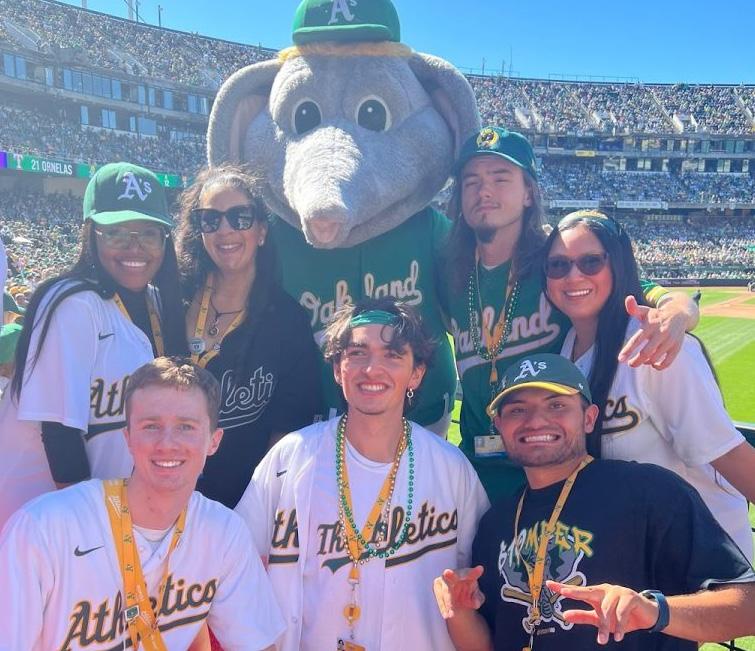
Cheers of “Let’s go, Oakland!” rang throughout the ballpark as A’s Manager Mark Kotsay gave his final address to the fans. I did not want to pull out my phone and record it because I was happy to be present and take it all in.
After the game, as I stood down on the field, I thought to myself, “This is the last time we are ever going to see a MLB team in Oakland.” I would rather enjoy this moment and celebrate my time here instead of record something 30,000 others were already recording.
An unexpected moment came after Kotsay’s address. A’s shortstop Max Schuemann approached me and asked, “Yo, can I see that for a second?” He was referring to the flag that Stomper would run out onto the field holding after each Athletics win. Scheumann took the flag and did a lap around the field with it, something that will be lauded as historic by fans for a long time to come. After he was done, he came back over and handed me the flag and said, “Thanks, brother.”
By JASMINE NAEMI
As record-high temperatures have swept the country this fall, athletes in outdoor sports are facing unprecedented challenges. But so far, the Diablo Valley College Women’s Cross Country team has persevered through the early part of the season by putting some new strategies in place to adapt to the heat.
The team held onto its position among the top ten at the 2024 George Brooks Memorial XC Invitational in September, where the DVC women’s team placed second, led by runner Alana Sevier, who finished fourth individually with a time of 19:23.7 in 95 degree weather.
For cross country coach Shelly Pierson, the autumn heatwave transformed not just runners’ training habits but also their mindset, forcing the team to adapt both physically and mentally to perform under harsher than normal conditions.
“Health and safety this season due to ongoing heat has definitely been challenging,” Pierson said, but “with the cooperation of our DVC sports medical staff we have been able to adjust practice time to early morning sessions on some days with the recent heat waves.”
Performing under high temperatures, particularly in physical activities like running, presents significant challenges, she added, which is why athletes should take precau-
tionary measures before doing high risk activity in 100 degree weather.
For example, Pierson said, “I modify workouts on hot days to include deep pool running and/or cross training in our air conditioned DVC performance lab on stationary bikes.”
She said her approach to modifying workouts helps maintain athletes’ fitness for race day while addressing their individual needs and physical well-being.
Sudden environmental changes lead to additional challenges. Pierson emphasized mental strength as another way for runners to overcome physical fatigue and maintain performance under difficult conditions.
“We use several sports psychology strategies like positive self talk and mental imagery,” Pierson said. “I also instill in them the concept that in order to race comfortably, they must first experience discomfort, and the best place for that is in a controlled environment at practice sessions.”
Temperatures soared above normal last month, as KQED News reported that “the Bay Area heat wave will be hotter and longer echoing the 1980 scorcher.” In comparison to 2023, temperatures here were higher at this time by at least ten to fifteen degrees fahrenheit.
With that in mind, athletes must
fuel themselves properly with food and drink at least a gallon of water a day to keep their bodies in good condition on the track, Pierson stated.
She stressed the importance of athletes taking constant water breaks during practice and monitoring their hydration levels throughout the day to avoid dehydration, heat exhaustion or, in extreme cases, heat stroke.
Even when the heat is normal, these strategies are critical for runners to maintain their health, Pierson said. Still, having medical help available at DVC provides her and the ath-
letes some assurance. “I collaborate with our DVC sports medical team whether it is hot or not,” she added.
“There are many other issues that an athlete can experience outside of heat issues. Our medical staff is imperative to not only the physical health of our student athletes, but also their mental, emotional, nutritional and overall health status.”
DVC Women’s Cross Country took second place at the Big 8 Conference Championships on Oct. 30. Pierson’s team looks forward to competeing at the NorCal Regional Championships on Nov. 8.

by

